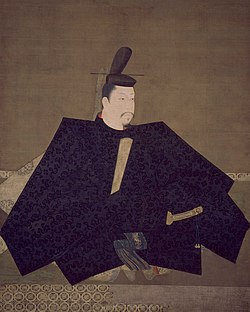 Global Information
Global InformationKamakura period information
This article includes a list of general references, but it lacks sufficient corresponding inline citations. (May 2020) |
| Part of a series on the |
| History of Japan |
|---|
 |
|
The Kamakura period (鎌倉時代, Kamakura jidai, 1185–1333) is a period of Japanese history that marks the governance by the Kamakura shogunate, officially established in 1192 in Kamakura by the first shōgun Minamoto no Yoritomo after the conclusion of the Genpei War, which saw the struggle between the Taira and Minamoto clans. The period is known for the emergence of the samurai, the warrior caste, and for the establishment of feudalism in Japan.
There are various theories as to the year in which the Kamakura period and Kamakura shogunate began. In the past, the most popular theory was that the year was 1192, when Minamoto no Yoritomo was appointed Seii Taishōgun (征夷大将軍). Later, the prevailing theory was that the year was 1185, when Yoritomo established the Shugo (守護), which controlled military and police power in various regions, and the Jitō (地頭), which was in charge of tax collection and land administration. Japanese history textbooks as of 2016 do not specify a specific year for the beginning of the Kamakura period, as there are various theories about the year the Kamakura shogunate was established.[1]
During the early Kamakura period, the shogunate continued warfare against the Northern Fujiwara which was only defeated in 1189. Then, the authority to the Kamakura rulers waned in the 1190s and power was transferred to the powerful Hōjō clan in the early 13th century with the head of the clan as regent (Shikken) under the shogun which became a powerless figurehead. The later Kamakura period saw the invasions of the Mongols in 1274 and again in 1281. To reduce the amount of chaos, the Hōjō rulers decided to decentralize power by allowing two imperial lines – Northern and Southern court, to alternate the throne. In the 1330s, the Southern court under Emperor Go-Daigo revolted and eventually led to the Siege of Kamakura in 1333 which ended the rule of the shogunate. With this, the Kamakura period ended. There was a short re-establishment (1333–1336) of imperial rule under Go-Daigo assisted by Ashikaga Takauji and Nitta Yoshisada but would later lead to direct rule under Ashikaga, forming the Ashikaga shogunate in the succeeding Muromachi period.
Several significant administrative achievements were made during the Hōjō regency. These provided the opportunities for other military lords to exercise judicial and legislative authority and the government established a council centered around collective leadership. The period saw the adoption of Japan's first military code of law in 1232. There was an expansion of Buddhist teachings into Old Buddhism (Kyū Bukkyō) and New Buddhism (Shin Bukkyō).
- ^ 鎌倉幕府は何年に成立?正解を言えますか (in Japanese). Toyo keizai. 9 June 2016. Archived from the original on 9 May 2022. Retrieved 9 March 2024.